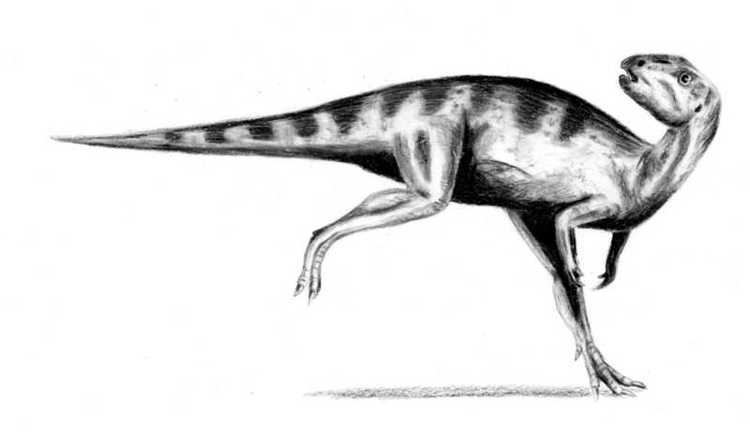Kingdom Animalia Clade Dinosauria Rank Subfamily | Class Reptilia Phylum Chordata Order Ornithischia | |
 | ||
Similar Ornithischia, Orodromeus, Albertadromeus, Oryctodromeus, Changchunsaurus | ||
Orodrominae is a subfamily of Thescelosaurid dinosaurs from the Cretaceous of North America.
Contents
Distribution
Orodromines were a North American based group with fossils from Canada and United States only. Albertadromeus, as its name suggests, is only from the upper (later) part of the Oldman Formation in the Belly River Group of Alberta, Canada. Orodromeus, the type genus, was widespread through Montana. Its holotype was found at the Egg Mountain in the Two Medicine Formation. Oryctodromeus fossils were found in the Lima Peaks section of the Blackleaf Formation, also from Montana. Zephyrosaurus, the most widespread genus, lived in southern Montana and northern Wyoming. Its holotypes locality is the Wolf Creek Canyon, which is a sandstone in the Cloverly Formation.
Age
Orodromines are widespread throughout time starting in the Aptian and ending in the Campanian. The earliest fossils are of Zephyrosaurus and are from the Aptian (113 Ma). After a 13 million year gap in the fossil record, fossils of a less common Oryctodromeus date to about 95 Ma in the Cenomanian. The next chronological fossils are from 76.5 Ma and belong to Albertadromeus. The latest fossils in the fossil record belonging to Orodromines are from the type genus, Orodromeus and date to 75 Ma.
Paleoecology
All Orodromines lived the lifestyle of a ground dwelling herbivore. Oryctodromeus burrows have been discovered. Orodromeus and Zephyrosaurus also probably lived in burrows.
Classification
Orodrominae is sister taxa to Thescelosaurinae. Its parent taxon is Thescelosauridae (Brown et al, 2013).
Phylogeny
Previously, all genera in Orodrominae (except Albertadromeus, which was named along with Orodrominae) were classified in the now unnatural group Hypsilophodontidae. They are all now simply considered to be basal members of Euornithopoda. The cladogram below is based on a phylogenetic analysis by Brown et al., 2013.
